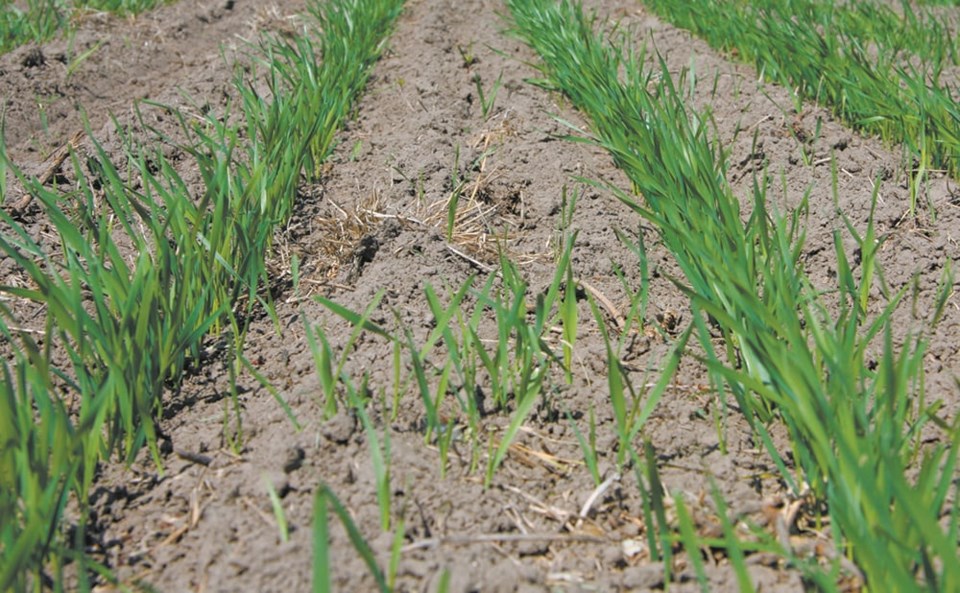WESTERN PRODUCER — North America’s spring wheat crop is late getting in the ground, but production prospects still look promising, say analysts.
Farmers in the United States were 64 percent done seeding as of May 21, according to the U.S. Department of Agriculture. That is below the five-year average of 73 percent.
Growers in Saskatchewan were 68 percent done seeding all crops as of May 22, which is lower than the five-year average of 76 percent.
MarketsFarm analyst Bruce Burnett isn’t overly concerned about the slow start.
“It’s not an ideal situation, but it’s not going to cut yields by 20 percent or anything like that,” he said.
Excess moisture in some areas is the main reason for delays. That is a far more desirable scenario than two years ago, when the crop was planted early due to drought, said Burnett.
The northern cropland regions of Saskatchewan and Alberta received good rainfall during the week ended May 26, which could cause further delays.
“The rains quite frankly were needed, so that’s sort of a good news story,” he said.
Rainfall was spotty in the central and southern regions of the two provinces.
“We’re very concerned there because of the subsoil moisture conditions,” said Burnett.
Statistics Canada is forecasting 19.39 million acres of spring wheat in Canada, a 7.5 percent increase over last year.
Burnett said it is far too early to forecast yields, but he thinks it is optimistic to expect the same results as last year.
Regardless, he thinks production will rise in Canada due to the increase in planted area.
The USDA is forecasting 37 million tonnes of all wheat production in Canada, well above Agriculture Canada’s estimate of 35.75 million tonnes.
Growers in the U.S. typically don’t like seeding spring wheat after mid-May, and only 48 percent of North Dakota’s crop was in the ground as of May 22.
“They had a lot more snow down there than we had in the Prairies,” said Burnett.
But he believes the crop will get planted, unlike last spring when farmers in the U.S. were unable to plant 1.16 million acres of wheat.
The USDA is forecasting 10.57 million acres of U.S. spring wheat, a slight drop from the previous year’s 10.84 million acres.
Jim Peterson, policy and marketing director for the North Dakota Wheat Commission, said a month ago people were thinking that number would fall by 500,000 acres.
But there has been better-than-anticipated planting progress in eastern North Dakota and Minnesota.
“We’ve been fortunate enough to catch some warmer, drier weather to allow that to happen,” he said.
Some acres will go unplanted in central and eastern North Dakota, but there could be more acres in the western part of the state due to a May jump in spring wheat prices.
He also thinks there will be more acres in Montana than the USDA was forecasting.
When all is said and done, he expects the number will be close to the USDA’s original estimate.
But durum plantings might fall below the USDA’s forecast of 1.78 million acres due to a forecast for wet weather in northeastern Montana and northwestern North Dakota.
Peterson is leaning toward a smaller overall U.S. spring wheat crop than last year’s 13.1 million tonnes, because growing conditions were nearly ideal in 2022.
The USDA comes out with its first 2023 spring wheat production estimate in July and will have a better guess in August.
Peterson said the drought area has shrunk in the U.S. Northern Plains, but there are still many areas “on the margin” for moisture, so growing season weather will determine the outcome.
Burnett said late planting is more of a quality concern than a yield threat. It pushes harvest into the rainy season in some regions. It can also have an impact on yield.
“The further south you go in their spring wheat belt, later planting means your crop is more vulnerable to heat stress throughout the critical flowering period,” he said.
Burnett hasn’t seen any U.S. production estimates, but thinks yields could be marginally better than last year due to improved soil moisture conditions in Montana.




